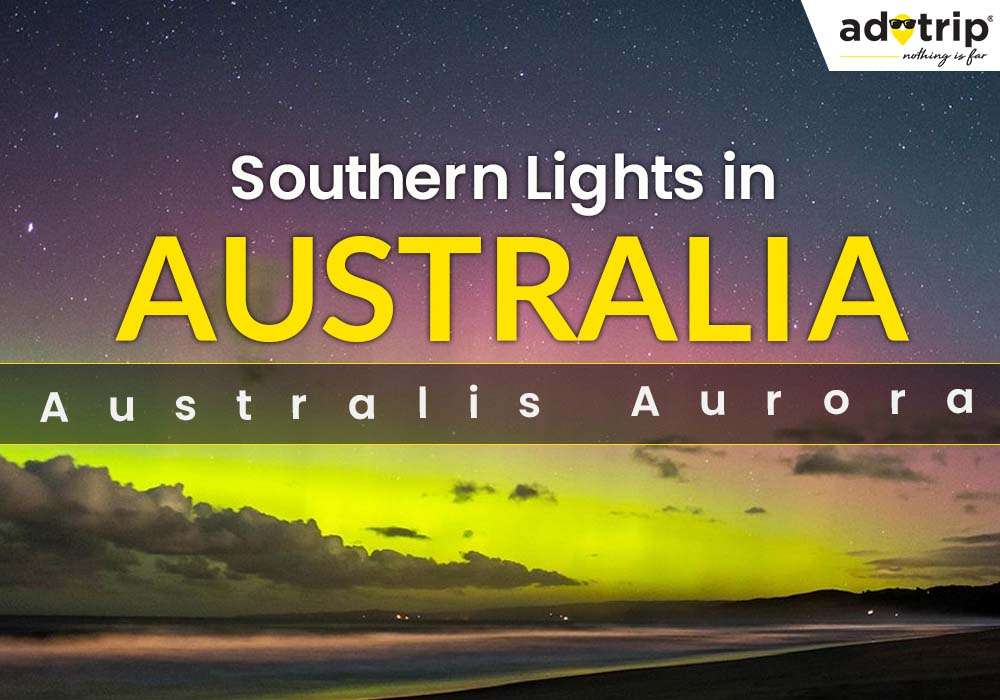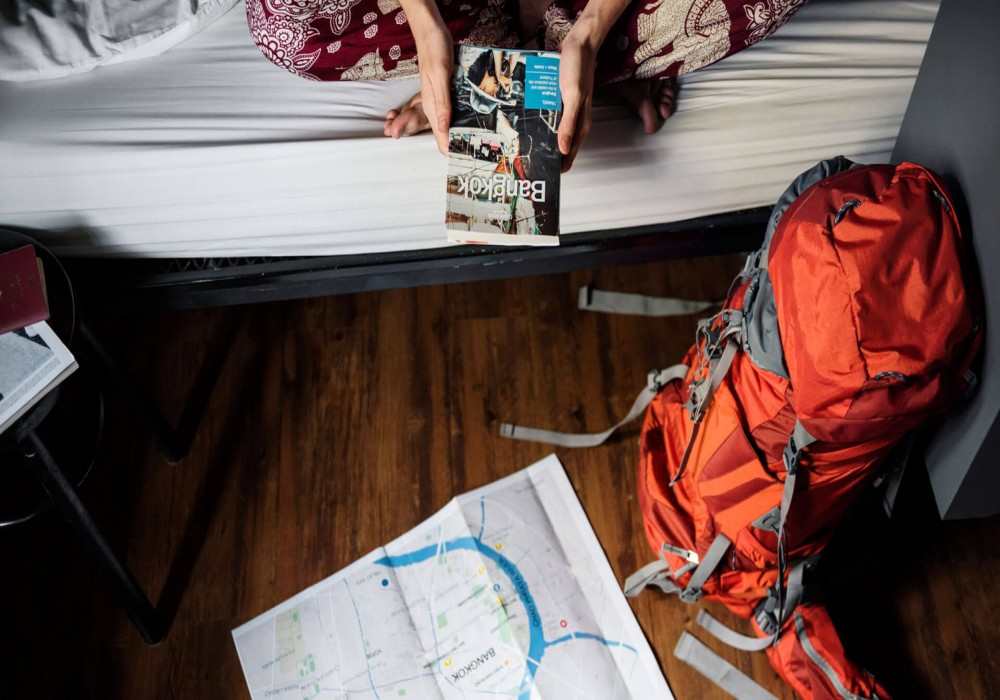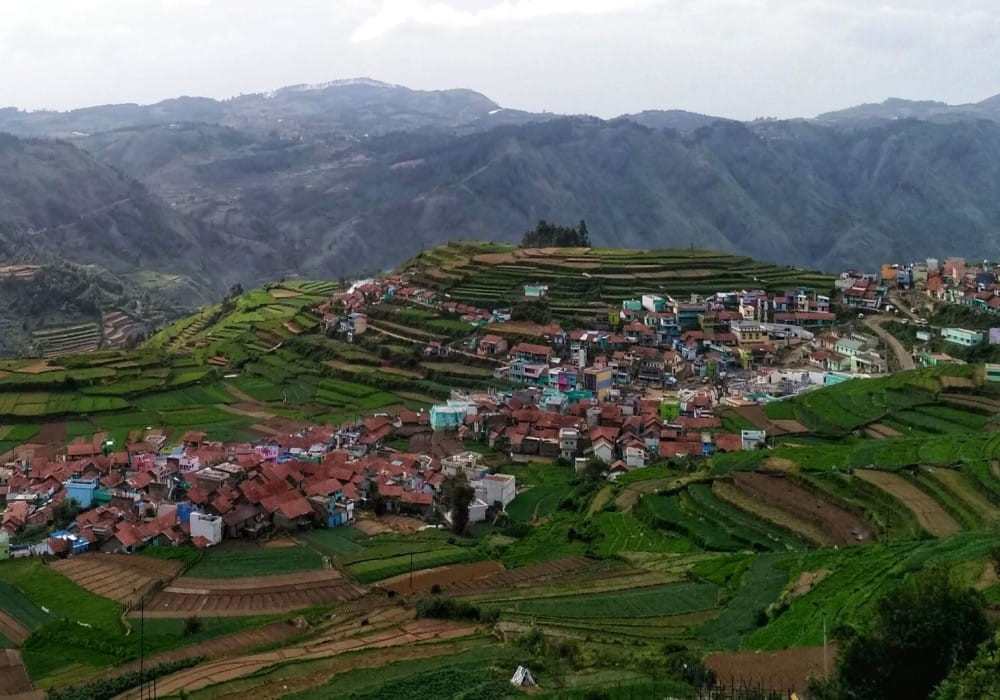
Last Updated At: 15-May-2025
Best Places To See The Southern Lights In Australia
Have you discovered the existence of the Southern Lights? While the Northern Lights command considerable fascination, their southern counterpart boasts its own remarkable beauty. When we dream of chasing the elusive dance of the Northern Lights, our minds often wander to the frosty realms of Scandinavia or the vast expanses of Alaska. Yet, there exists a breathtaking celestial counterpart in the southern hemisphere: the Southern Lights, or Aurora Australis. Australia, typically associated with its sun-drenched beaches and rugged outback, harbours its own mesmerising display of nature's grandeur. Here, in the southernmost reaches of the continent, the night sky transforms into a canvas ablaze with hues of emerald, crimson, and violet.
This blog will take on a spectacular virtual journey to uncover the hidden gems scattered across Australia, where one can bear witness to this awe-inspiring spectacle. From the rugged coastlines of Tasmania to the rolling plains of Victoria, and from the remote reaches of South and Western Australia, each destination holds the promise of a celestial show unlike any other. Join us as we delve into the lesser-known corners of the land down under, where the Southern Lights cast their enchanting glow upon the southern skies.
List Of 5 Places To See Southern Lights In Australia
Gear up, guys! It’s time to discover the top-ranking places to witness the eye-popping dance of Southern lights! Here you go:
- Tasmania - A Prime Location for Auroral Displays
- Southern Lights Photography Tips
- Exploring Aurora Australis in Southern Australia
- Southern Lights Tours and Packages
- Southern Lights Weather Forecast Australia
Tasmania - A Prime Location for Auroral Displays
Tasmania, Australia's southernmost state, is renowned for being one of the best places to witness the Aurora Australis. The island's remote and pristine wilderness provides the perfect backdrop for experiencing this awe-inspiring event. Some of the top Southern Lights viewing spots in Australia’s Tasmania include -
- Flinders: The coastal town of Flinders, situated on the Mornington Peninsula, is another great location for aurora sightings. Its proximity to Melbourne makes it easily accessible for city-dwellers seeking a celestial escape.
- Point Lonsdale: Just across the bay from Queenscliff, Point Lonsdale is known for its dark skies and is a fantastic place for aurora photography. The best time to see the Southern Lights in Australia is May to August.
- Phillip Island: Famous for its penguins and beautiful landscapes, Phillip Island is also a fantastic spot for witnessing the Southern Lights. The island's southern coastline provides excellent views of the night sky.
- Wilsons Promontory: As one of Victoria's most iconic national parks, Wilsons Promontory is a haven for nature enthusiasts. It's also a top choice for experiencing the Southern Lights due to its remote location and minimal light interference.
- Anglesea and Aireys Inlet: These coastal towns along the Great Ocean Road in Victoria offer good opportunities for witnessing the Aurora Australis. Their oceanfront views create a stunning backdrop for the light display.
Southern Lights Photography Tips
To capture the beauty of the Southern Lights, follow these Southern Lights photography tips:
- Use a sturdy tripod to keep your camera steady during long exposures.
- Choose a wide-angle lens with a low f-stop (e.g., f/2.8) to capture more of the night sky.
- Set your camera to manual mode and experiment with exposure settings. Start with a shutter speed of 10-20 seconds and adjust as needed.
- Use a remote shutter release or the camera's self-timer to prevent camera shake.
Exploring Aurora Australis in Southern Australia
Moving further west and south, South and Western Australia also have their fair share of Southern Lights viewing spots. Exploring Aurora Australis in Southern Australia is an unforgettable experience, and some notable locations include:
- South Australia: The southern coast of South Australia, including places like Kangaroo Island and the Fleurieu Peninsula, can provide excellent sightings of the Aurora Australis. The region's clear skies and remote locations make it ideal for stargazing.
- Western Australia: The southernmost parts of Western Australia, including Albany and Esperance, offer stunning vantage points for observing the Southern Lights. These areas are known for their pristine beaches and dark skies, providing an exceptional aurora-chasing experience.
Southern Lights Tours and Packages
For those seeking expert guidance and an all-inclusive experience, consider Southern Lights tours and packages. These tours are designed to maximise your chances of witnessing the Southern Lights and often include accommodations, transportation, and knowledgeable guides who can provide insights into this mesmerising natural phenomenon.
Read more : Culture Of Australia
Southern Lights Weather Forecast Australia
To increase your chances of a successful Southern Lights expedition, check the Southern Lights weather forecast in Australia. This will help you plan your trip during periods of clear skies and optimal auroral activity.
Read more : Famous Food Of Australia
Although the Northern Lights often receive more attention, Australia's Southern Lights offer a breathtaking celestial show of their own. From the scenic vistas of Tasmania and Victoria to the wild shores of South and Western Australia, there are plentiful chances to witness the Aurora Australis if you're equipped with the right knowledge. Prepare your camera, bundle up, and set out on an unforgettable expedition to behold this enchanting natural marvel in the southern hemisphere.
With Adotrip's guidance, your journey to witness Australia's Southern Lights will be smooth and memorable, transforming your celestial dreams into reality.
With us, nothing is far!
Frequently Asked Questions About Southern Lights In Australia
Q1. Where in Australia can you see the mesmerising Southern Lights?
A1. The Southern Lights, also known as the Aurora Australis, can be observed in various parts of southern Australia, primarily in Tasmania and the southernmost regions of Victoria, South Australia, and Western Australia.
Q2. Can you recommend the best viewing spots for the Southern Lights?
A2. Some popular viewing spots for the Southern Lights in Australia include locations like Hobart and the surrounding areas in Tasmania, as well as the southern coastline of Victoria, such as Wilsons Promontory. For the best experience, choose areas with minimal light pollution and clear southern horizons.
Q3. When is the optimal time of year to witness the Southern Lights in Australia?
A3. The optimal time to witness the Southern Lights in Australia is during the winter months, from May to September. These months offer longer nights and darker skies, increasing your chances of seeing the auroras.
Q4. Are there any specific conditions that enhance the visibility of the Southern Lights?
A4. Yes, several conditions can enhance the visibility of the Southern Lights, including high solar activity, clear skies, and low light pollution. Monitoring geomagnetic activity and solar forecasts can help you plan your viewing.
Q5. Can you suggest locations with minimal light pollution to enjoy the full experience?
A5. Consider visiting remote areas or national parks in southern Australia to minimise light pollution. Some places known for minimal light pollution include Cradle Mountain-Lake St. Clair National Park in Tasmania and Wilsons Promontory National Park in Victoria.
Q6. What camera settings are recommended for capturing the Southern Lights on camera?
A6. To capture the Southern Lights, use a camera with manual settings. Recommended settings include a wide aperture (e.g., f/2.8 or lower), a high ISO (e.g., 800-3200), a long exposure time (e.g., 10-30 seconds), and a sturdy tripod to prevent camera shake.
Q7. Are there guided tours or experiences available for observing the Southern Lights?
A7. Yes, there are guided tours and experiences available in Australia that offer the opportunity to observe the Southern Lights. These tours often include transportation, expert guides, and photography tips for capturing the auroras.
Q8. How can I track the forecast for geomagnetic activity to plan my viewing?
A8. You can use websites and apps dedicated to aurora predictions to track geomagnetic activity forecasts. Websites like the Space Weather Prediction Centre (SWPC) and apps like "Aurora Australis Forecast" provide real-time data and forecasts for auroras in Australia.
Q9. Are there indigenous perspectives or cultural significance related to the Southern Lights?
A9. Yes, the Southern Lights hold cultural significance for some Indigenous Australian communities. They have their own stories and interpretations of these celestial phenomena, which vary among Indigenous groups.
Q10. What's the best way to prepare for a Southern Lights viewing adventure in Australia?
A10. To prepare for a Southern Lights viewing adventure in Australia, consider the following:
Check geomagnetic activity forecasts, pack warm clothing, as it can get cold during the winter months, Bring a sturdy tripod and a camera with manual settings for photography, Choose a location with minimal light pollution, Consider joining a guided tour for expert guidance and safety, Be patient, as auroras can be unpredictable, and multiple viewing attempts may be needed to witness them.
--- Published By Adotrip
Latest Blogs

Cash in the Wild: My Safari Adventure Across Kenya with Only...

One Day Picnic Spot Near Pune - Adventure, Trekking and Natu...

One Day Picnic Spots Near Mumbai - Monsoon, Adventure, Beach...

The Best Places to Go in Thailand in 2025













.png)
 Dubai
Dubai Malaysia
Malaysia USA
USA





